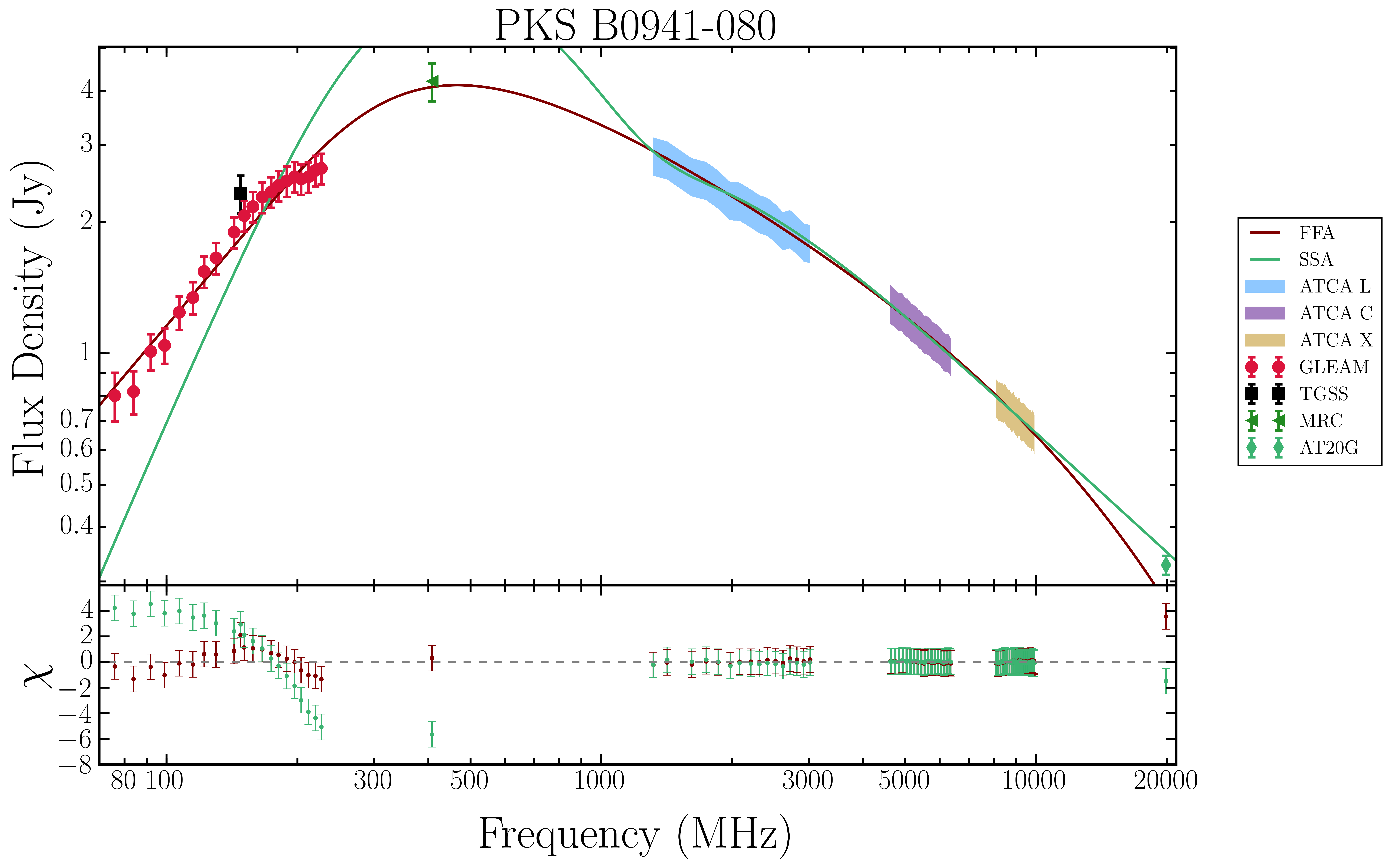Daily Image
09-08-2017Peak spectrum sources and galaxy evolution: Modeling gigahertz-peaked spectrum sources over many magnitudes of frequency
| Submitter: | Mel J Rose |
| Description: | Gigahertz-peaked spectrum (GPS) radio sources are a type of active galactic nuclei (AGN) that can morphologically resemble tiny versions of powerful, lobed radio galaxies. Due to their small scale morphologies, GPS sources have been hypothesized to be the young precursors to large radio galaxies. However, population studies have revealed an overabundance of detected GPS when compared to large radio galaxies. An alternative "frustration" model suggests that GPS sources are not small in size due to youth but instead due to stifling, dense nuclear plasma surroundings. Identifying the absorption mechanism responsible for the spectral turnover is vital in differentiating between the "youth" and "frustration" models but until now the spectra of these sources have been too sparsely sampled to identify the dominant absorption mechanism in the population. We present the largest sample of GPS sources (~70) that has ever been observed over three orders of magnitudes in frequency (72 MHz - 20 GHz), providing exquisite spectra to test the dominate absorption mechanism in the population. We apply a Bayesian spectral fitting routine to investigate whether synchrotron self absorption (SSA), which is inline with the "youth" model, or free-free absorption (FFA), the "frustration" model, better describes the spectral turnovers of this population. In this talk we will reveal that the population appears to be dichotomous, with no one absorption mechanism dominant and discuss what this implies for the evolution of radio galaxies. The spectra for one GPS source, PKS B0941-080, is presented here with its FFA and SSA models. |
| Copyright: | n/a |
| Tweet |  |
